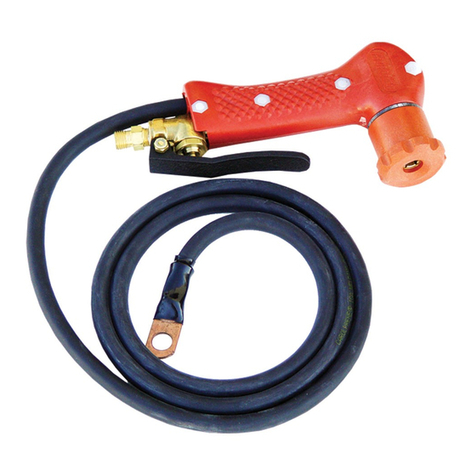
The purpose of this document is to describe the recommended operating
procedures, maintenance requirements and repair procedures necessary to ensure
proper operation of the Broco® Prime-Cut cutting torch system.
Components for which procedures are described are the cutting torch, the striker
plate assembly, and accessory equipment.
Oxygen regulator repairs should be conducted only by qualified personnel trained
and authorized to perform work on high pressure oxygen regulators.
Inspection/repairs of oxygen cylinders and oxygen cylinder valves should be
conducted only by qualified personnel trained and authorized to perform work on
high pressure oxygen cylinders and oxygen cylinder valves.
2.0 WARNINGS AND SAFETY PRECAUTIONS
2.1 Warnings
All users and their supervisory personnel must read and be thoroughly familiar with
the contents of this manual prior to using this equipment or disassembling any part
of the Prime-Cut cutting torch system.
Never modify this equipment in any manner or use it in any way not specified in this
manual.
Oxygen mixed with oil or grease reacts explosively. Never use compressed air, oil,
solvents or other material to clean the oxygen system. Always keep oil and grease
away from the cutting torch, oxygen cylinders, valves, regulators, hoses and fittings.
Never use this equipment in conjunction with any power source other than a 12 volt
DC or 24 volt DC battery.
Never use the Prime-Cut exothermic cutting system or rods underwater with a
welding power source. Prime-Cut products are not intended for diving operations
and are not insulated to protect from the risk of electrical shock.
Never use this equipment unless you are familiar with acceptable industrial welding
and cutting procedures and practices.
Always use this equipment following generally accepted industrial safety
procedures and practices.
Always apply and adhere to ANSI/ASC Z49.1-88 “Safety in Welding and Cutting”
standards, or similar locally prevailing standards when using this equipment.





























